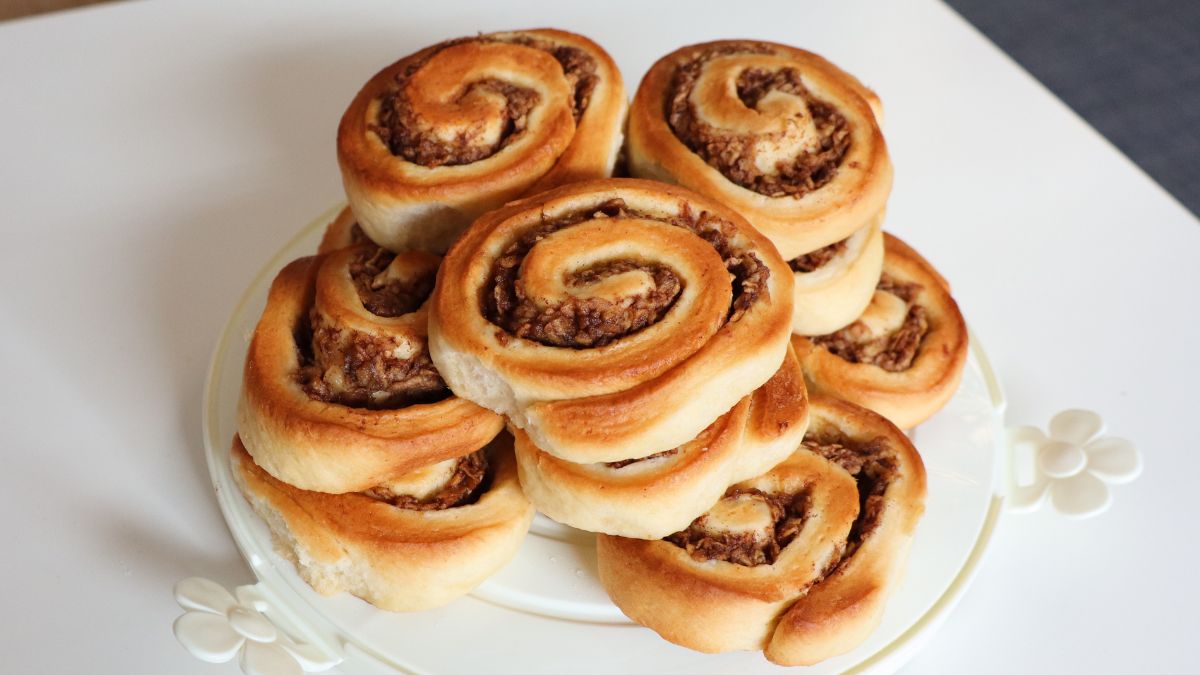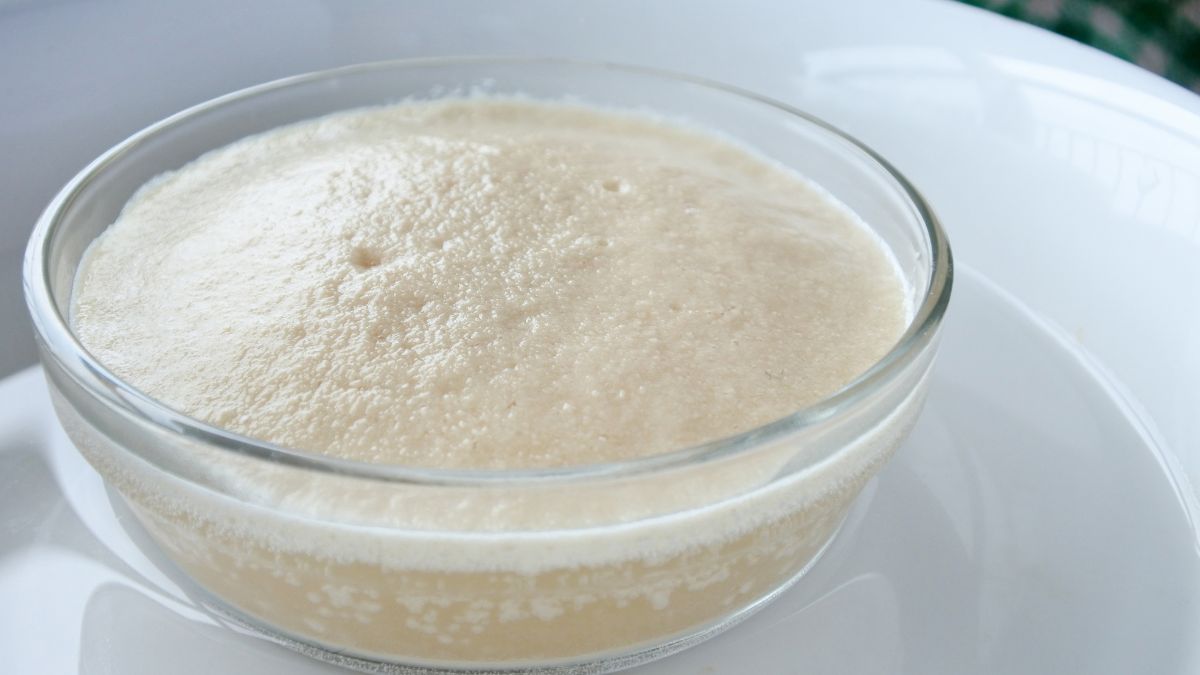Why Didn’t Your Cinnamon Rolls Rise? Here’s What To Do!

When trying to make cinnamon rolls, they sometimes don’t come up as you have imagined. One of the most frequent things that happened to me initially was flat cinnamon rolls. With time, I learned why this happens and what to do about it.
Your cinnamon rolls most likely didn’t rise because you didn’t use the right yeast, proof it correctly in warm water, or add the ingredients in a specific order.
In this article, I’ll explain the best ways to prepare the yeast and proof it to guarantee that the rest of the recipe works. We’ll also look at some tips, such as handy cooking tips and specific breadmaking techniques, to help you become a better cinnamon roll maker. 🙂
Why are your cinnamon rolls not rising?
There are several causes of cinnamon rolls not rising, including yeast issues, timing, and ingredient quantities.

Improper use of yeast
Usually, the foundation for any good bread or pastry will come down to yeast.
Yeast is a single-cell organism known in scientific terminology as Saccharomyces cerevisiae. Because it is living, it needs food, warmth, and moisture to survive and thrive.
It converts food through a fermentation process using the inputs of sugar and starch, making carbon dioxide and alcohol. If you’ve ever researched what makes fizzy drinks fizzy, you’ll know it’s carbonation.
Carbonation involves carbon dioxide because, in effect, carbonation is just another way of saying that carbon dioxide gas is dissolved in water.
Carbon dioxide is generally kept in the water through natural pressure, such as in a spring, or via artificial methods, such as the soda can or bottle. As the pressure is relieved, say by opening the container, this causes the slow release of the gas, forming bubbles in the substance.
This exact principle is also occurring with yeast; as the carbon dioxide is released, baked goods rise.
As the dough is elastic and stretchable, the carbon dioxide released from the yeast cannot easily escape. Think of it as a source of inflation, causing the dough to blow up like a balloon. This causes the dough to rise.
There are actually several types of yeast, but for cinnamon rolls, you will want to make sure you get baker’s yeast, and then you generally have a choice of fresh yeast or active dry yeast.
You can use either type for cinnamon rolls, but expect a longer bake time and rising time when using active dry yeast.
Amazon has the Antimo Caputo Lievito Active Dry Yeast that comes in a 3.5-ounce can and is made in Italy. Keep in mind that fresh yeast is perishable, so if you don’t bake much, it’s best to go with active dry yeast.
Otherwise, if active dry yeast is more your thing, go for Red Star Active Dry Yeast, which comes in a great value size of 2 pounds.
Another variety of dry yeast called instant yeast can be added directly to other ingredients and does not need to be dissolved in water beforehand.
Yeast can be tested for its health by pouring about half a cup of lukewarm water into a bowl, sprinkle the yeast over the top, and stir.
After a few minutes, you should notice the yeast completely dissolve into the water, telling you that it is active as you will also have bubbles. It will look like something in the picture below.

The main condition here is that the water needs to be warm. Not cold, not hot, but warm. Every other situation will cause your dough not to rise.
Once you have confirmed your yeast is active, the next step is to ensure it has warm enough temperatures to activate. This can mean breadmaking is difficult in colder climates, so some people turn up the thermostat to ensure the inside of the house is toasty.
If you can get the ambient temperature of the place where your dough will be sitting to about 75 to 80 °F, that should be enough to activate.
Yeast can be activated or proofed by following some steps. First, prepare the milk by bringing it to a boil and then turning the heat to 120 Fahrenheit. Proof the yeast in warm water with sugar for about 4 minutes. Start to mix oil, sugar, and vanilla in a mixer. Of course, the dough will rise even without sugar, but sugar will help to speed up the process.
After the 4 minutes have passed and the milk has cooled, both are added to the other liquids and mixed briefly.
Another strategy is to put the mixture in the fridge. Cinnamon roll dough will still rise overnight in the refrigerator, and a cold fermentation process means carbon dioxide is getting released slowly and completely.
Bad timing
Give your yeast enough time to rise and make sure that throughout the latter stages of the process, the mixture and other parts have plenty of time to bulk up and expand fully.
Too many ingredients
There is little variation in cinnamon rolls but stick to the recipe you’ve chosen. Ingredient choice will impact the yeast’s effectiveness, so it may take a few trial runs before you find out what works best for your ingredients, kitchen, and temperature.
Keep in mind that yeast is not the only ingredient. Adding other common baking products like eggs, butter, and milk can slow down the yeast, causing the rising process to take longer.
How do you fix cinnamon roll dough that didn’t rise?
If the dough fails to rise, you can try preparing the dough at a higher temperature or raise the room’s ambient temperature.
Another technique is to try adding more sugar, water, and yeast.
As the yeast will be doing most of the heavy lifting when it comes to the rising of the dough, you’ll want to make sure you proof and treat the yeast correctly. One common cause of bad bread is killing the yeast by using ingredients that are too hot, like milk.
It would help if you also lay them out to have enough space to expand and rise after cutting with the floss. This process should happen before baking and is crucial to the full formation of cinnamon rolls.
Can you still bake the dough that didn’t rise?
Bread that doesn’t rise will have some significant differences in taste, edibility, and appearance. If there has been no rising at all compared to the initial bread mixture, it’s probably best not to bake it, as the yeast has done nothing at all. Your baked goods would be dry and hard to chew.
However, if you notice a moderate increase in the volume of at least 25%, then it’s certainly worth baking the rolls to see what kind of result you get.
Set your oven to 375 °F to get the best results. Keep in mind that as you’re dealing with what is referred to as enriched dough, a temperature that is too hot will cause excessive browning. You can also run into issues at too low a heat, as the rolls will not bake at all.
One of the most reliable ways to test whether your rolls have baked fine despite not rising is to grab a digital thermometer. Amazon has the BRAPILOT Food, Candy, and Meat Digital Thermometer that uses a probe for optimal checking of your cinnamon rolls.
Aim for an internal temperature between 190° and 200 °F for optimal taste.
What if cinnamon rolls didn’t rise?
Rolls that did not even rise can still be baked and consumed, but the taste is unlikely to be very good.
What to do with failed baked cinnamon rolls?
Rolls that did not even rise can still be baked and consumed, but the taste is unlikely to be very good. However, there are no real risks from eating failed cinnamon rolls, especially if the dairy products and other ingredients have reached the minimum temperature to eliminate the risks of vectors such as salmonella. [1]
Before diving into the nutritional details, please review our Nutritional Disclaimer page for important context and clarifications.
How to successfully bake cinnamon rolls?
One technique is to ensure that the rise in the dough comes from the sugar and flour and not the oil or butter.
Generally with bread, only add butter or oil after the flour, water, and sugar combination has been mixed, and the yeast has started to activate. Generally, it’s not a good idea to mix the butter and sugar first when making bread.
The other aspect to be aware of is that there is a difference between bread and cake making. You will always want to follow bread techniques when making the best cinnamon rolls possible, as they are not cakes.
The initial stages will involve flour, sugar, warm water, and yeast added to a bowl. When that starts to bubble, add warm milk plus a tiny bit of butter melted in milk, with a little salt.
You can then gradually add flour until the dough takes shape and can be kneaded. At this point, the mixture should be put in an oiled bowl that is large enough to accompany the coming doubling in volume per the actions of the yeast.
A sign that the dough is properly mixed is when the dough is pulling away from the sides of the mixing bowl, and the dough is a consistent surface but not sticky to the touch.
Once you’ve conquered the dough part of cinnamon roll making, it’s a simple case of cutting, rolling, and baking the rolls. You can also use some tricks to improve the cinnamon rolls’ appearance and taste.
One tip is to use a rolling pin to create a large, flat dough sheet. It’s best to make it into a square or rectangular sheet with sharpish corners.
After applying the cinnamon flavoring as a paste spread out over the surface. The thickness should be no more than 3 quarters of an inch.
After that, you can roll it up into one large dough snake, using your hands to even out along the length, even pulling segments to help spread the dough and paste. It should be a long, cylindrical uniform tube.
Then you can use dental floss to cut the individual segments, as a knife tends to push and compress the soft dough.
Hold each end of the dental floss in each hand, and draw it towards the underside by passing over one of the roll ends. Bring up the two ends of the floss to cross over the top of the roll, then pull tight to cut a segment.
